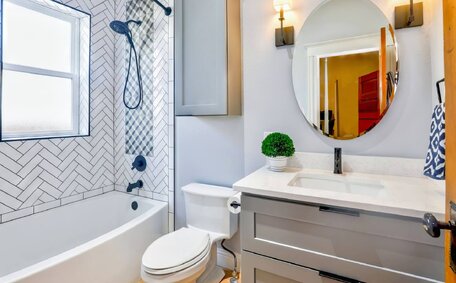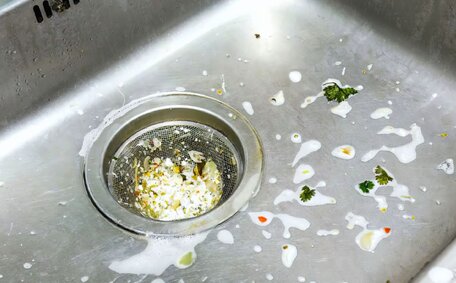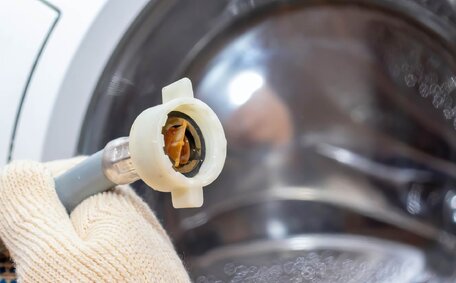Introduction to Tankless Hot Water Systems
On-demand water heaters, more commonly termed tankless hot water systems, are becoming a favoured choice among homeowners in Burwood, offering a convenient solution for continuous hot water with energy efficiency.
Without the storage tanks used in traditional systems, tankless water heaters use advanced heat exchanger technology to instantly heat water straight from the mains when the tap is turned on. The tankless design significantly reduces the risk of depleting hot water and typically requires less maintenance compared to traditional systems with storage tanks.
These heaters employ natural gas burners or electric elements to quickly heat the water, assuring a consistent supply of hot water to both taps and appliances.
Tankless systems are cost-effective as they only heat the water you use, eradicating the standby energy losses associated with reheating water in traditional tanks.
They provide quick access to hot water and the potential for reduced energy bills, outstripping conventional systems in both operational efficiency and durability. Discover more about tankless water heating technology and considerations in further detail to help determine if installing a tankless system is the right choice for you.
What Is a Tankless Water Heater and How Does It Work?
Understanding how tankless water heaters work is easier when you consider they don’t rely on a storage tank to provide hot water, unlike conventional systems. Instead, it’s an on-demand system that delivers a continuous supply of hot water by heating it as it passes through the unit.
From your main water line, cold water enters the tankless heater, which may be powered by gas, electricity, or a combination of both. An advanced heat exchanger sits at the heart of the system, rapidly heating water flowing through it with gas or electricity. These elements swiftly heat the water, ensuring instant hot water when a tap is turned on in your home.
A flow rate sensor in electric tankless units detects and relays water flow data to the control board. Upon turning on the hot water tap to the desired temperature, gas valves or electric elements activate to maintain a consistent output for as long as needed. Whether you’re using a gas water heater or an electric model, tankless systems deliver around 5 to 9 litres of hot water per minute, capable of supplying multiple points at once provided your mains water flow rate is adequate.
In essence, cold water enters the heater, is instantaneously heated by gas or electric elements, and then delivered as hot water to your tap. The process of the tankless water heater is limitless, repeating continuously whenever there is a demand for hot water.
Heat Exchanger and Flow Sensor Technology
The heat exchanger is the critical component that powers a tankless water heater. Using gas tankless water burners or electric heating elements, it rapidly heats cold water as it passes through a complex chamber designed for maximum heat transfer efficiency.
Made of durable metals like copper or stainless steel, the compact heat exchanger instantly elevates water temperature when hot water demand is detected by the flow sensor. This sensor monitors water flow through the unit and signals the control board when a hot water tap is activated.
Seconds after activation, gas burners or heating elements ignite, heating the passing water instantly as it courses through the heat exchanger. Hot water then continues its journey through your pipes from the unit directly to your tap, ensuring you get continuous hot water for as long as required.
This seamless interaction between heat exchanger and flow sensor technology ensures that tankless water heaters can deliver unlimited hot water without any reliance on stored water tanks.
Heating water strictly when necessary, tankless heaters avert energy losses typical of traditional tanks, making them among the most energy-efficient options for reliable home hot water.
Temperature Modulation and Control
Eliminating the need for a hot water storage tank, tankless water heaters offer precise control and utilise advanced modulation technology to cater to your hot water temperature preferences. Curious about how do tankless water heaters operate in a practical setting? An electronic control board oversees sensors that continually monitor outgoing and incoming water temperatures to regulate heating intensity.
You can adjust the default temperature setting to warm your shower water or suit different needs around your home. For example, lowering heat output for an ensuite shower or boosting it higher for washing dishes. Useful safety features are also implemented which can prevent dramatic temperature fluctuations that may cause scalding.
Advanced flow rate sensors identify peak usage periods when multiple outlets are active, allowing the tankless system to adaptively modulate heat output. Special algorithms help the control board dynamically boost heating elements to maintain your pre-set temperature despite sudden surges in water flow.
So whether you prefer long steamy showers, baths for the kids, or washing pets outdoors, your tankless water system consistently delivers the right temperature through intelligent modulation technology, without costly re-heating energy losses.
Comparing Tankless Water Heaters to Traditional Storage Tank Systems
When comparing tankless water systems to traditional tank water heaters, there are some key differences in their design and operation worth noting.
Storage tank systems work by continually heating water stored in an insulated tank, even when not in use. This tank storage heating technique maintains hot water availability but results in energy waste through heat loss 24/7, contrasting with the efficiency of a water heater your home may benefit from with tankless models. Opposed to storage tank water heaters, tankless units boast an efficient design, saving energy by eliminating standby losses and opting to only heat water when you activate a hot water tap.
Heating water directly via a built-in heat exchanger, tankless models provide an unlimited supply of continuous flow hot water for as long as needed. Tankless heaters’ compact, all-in-one design saves considerable space compared to bulky traditional tank heaters with separate heating units.
Tankless heaters are markedly more energy-efficient, requiring less energy to heat the same volume of water. Their lack of stored water requiring reheating further enhances this efficiency.
With higher efficiency and no standby losses to consider, homeowners switching from traditional hot water heaters to tankless often enjoy substantial savings on energy bills. Moreover, tankless water heaters are more environmentally friendly, emitting fewer greenhouse gases.
Before installing a tankless hot water heater, however, it’s worth confirming your mains water supply flow rate is sufficient and accounting for higher upfront costs. Well-suited to new builds or renovations, tankless water heaters offer a convenient, green and luxurious way to enjoy endless hot water on demand.
Benefits of Switching to a Tankless Water Heater
Upgrading to a tankless water heater offers Burwood homeowners an array of valuable benefits:
- Endless Hot Water: Tankless systems deliver an unlimited stream of hot water, ensuring availability even during prolonged usage or simultaneous demand across multiple fixtures.
- Superior energy savings - Energy Efficiency: The technology behind tankless systems heats water on demand, eliminating standby losses characteristic of traditional storage systems.
- Faster hot water delivery - Fast Delivery: Their compact design reduces the amount of water that needs to be heated, resulting in quicker hot water output at the tap.
- Longer lifespan - Gas tankless water heater works efficiently and can outlast traditional systems by up to 20 years if maintained correctly.
- Space saving - All heating components fit into a small unit mounted on a wall, freeing up valuable floor space.
- Added property value - Luxurious endless hot water can increase your home’s resale potential.
With outstanding energy efficiency, instantaneous hot water, space savings, and longevity, the benefits tankless water heaters offer a smart, sustainable upgrade that enhances comfort and convenience in your home daily.
Considerations Before Installing a Tankless Water Heater
When opting for a tankless hot water system in your Burwood home, there are some key considerations to weigh up first:
- Sizing - Your household’s hot water needs require sufficient flow rates, typically between 16 and 20 litres per minute, to supply multiple showers or taps simultaneously. Check your mains water pressure.
- Upfront Cost - While initially costlier, tankless heaters offer long-term savings due to their superior energy efficiency.
- Power Source - When it comes to running costs, it’s worth considering how much more cost-effective gas tankless heaters are compared to their electric counterparts.
- Venting - Proper venting of exhaust gases is critical for gas tankless units to operate safely and efficiently.
- Water Quality - Hard water can cause scale build-up issues, so installing a water softener is advisable.
- Professional Installation - With gas, electrical and venting connections involved, always engage qualified plumbers to install your tankless unit.
While it does require careful planning, a tankless water heater ultimately provides an endless flow of hot water that enhances convenience and luxury in every corner of your home.
Sizing and Site Requirements
When selecting a tankless water heater for your Burwood home, it’s crucial to choose the right size unit to meet your household’s hot water requirements. To select the appropriate size, you’ll need to calculate the maximum flow rate in litres per minute, adding the consumption of all fixtures that might run concurrently.
If you plan to run a shower and kitchen tap at the same time, add up their GPMs. Consider extra capacity for potential additional fixtures or occupants. Gas systems can vary from approximately 41 kW to as much as 293 kW in heating power.
The tankless unit’s location also impacts performance. Install it as close as possible to high demand areas like bathrooms to minimise water wastage waiting for heat. Ensure adequate clearances for ventilation, gas, water and electrical connections by following the manufacturer’s recommendations.
Though installation is intricate, involving ventilation, gas, and electrical work, accurate sizing and positioning of a tankless water heater optimises user convenience and system efficiency. Engage qualified Burwood plumbers specialising in tankless installations to maximise benefits within your home.
Ventilation and Gas Line Installation
Gas tankless water heaters require proper ventilation to safely remove exhaust gases like carbon monoxide from your home in Burwood. Dedicated PVC vent pipes for gas water heaters must route to the exterior, often through walls or the roof.
The size of the vent diameter is contingent on the unit’s BTU rating and the required vent length for safe and effective operation. Choosing larger vent diameters can prevent problems related to restricted airflow.
For optimal gas flow, you can call us; a licenced technician will ensure your heater is installed with the appropriate gas lines or modified existing pipes. They ensure full compliance with Sydney gas fitting regulations about line sizing, connectors, safety valves and more.
Situating outdoor units is also part of professional tankless water heater installation, meeting clearance requirements around air intakes and exhaust vents. While complex, correct ventilation and gas line set up enables safe, peak performance for endless hot water.






